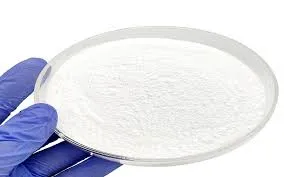The Primary Chemical Used to Treat Municipal Water An Overview
Municipal water treatment is a critical process that ensures the safety and quality of drinking water supplied to communities. Among various chemicals used in water treatment, chlorine stands out as the primary disinfectant employed to eliminate harmful microorganisms and pathogens. In this article, we will explore the role of chlorine in municipal water treatment, its effectiveness, and the considerations associated with its use.
Chlorination has been a staple method of water disinfection since the early 20th century. The introduction of chlorine into municipal water systems has significantly reduced the incidence of waterborne diseases such as cholera, typhoid, and dysentery. The effectiveness of chlorine as a disinfectant stems from its ability to destroy bacteria, viruses, and protozoa through a process known as oxidation. When chlorine gas or chlorine compounds, such as sodium hypochlorite, are added to water, they react with the organic and microbial contaminants, effectively rendering them harmless.
The process of chlorination typically involves the addition of chlorine in controlled amounts to ensure optimal disinfection while minimizing potential byproducts that may arise during the chemical reactions. One of the primary concerns associated with chlorination is the formation of trihalomethanes (THMs), which are disinfection byproducts that can occur when chlorine reacts with organic matter in the water. These byproducts have raised health concerns, prompting regulatory agencies to establish maximum contaminant levels. Consequently, water treatment facilities must monitor and adjust chlorine levels carefully to balance effective disinfection with public health safety.
what is the primary chemical used to treat municipal water

In addition to its primary role as a disinfectant, chlorine also serves as a powerful oxidant, helping to remove color, taste, and odor from the water. This dual functionality enhances the overall quality and palatability of drinking water. The presence of chlorine in the treatment process not only ensures immediate disinfection but also provides a residual effect that helps inhibit the growth of bacteria throughout the distribution system. This residual chlorine is crucial in maintaining water quality as it travels through pipes to reach consumers.
While chlorination remains the cornerstone of municipal water treatment, it is often combined with other treatment methods to enhance effectiveness. For instance, chlorine may be used in conjunction with filtration processes or another disinfectant, such as chloramines, to achieve comprehensive treatment. Some municipalities are increasingly exploring alternative disinfection methods, including ultraviolet (UV) light and ozone treatment, as part of a broader strategy to meet regulatory standards and address public health concerns. These alternative methods may reduce the formation of harmful byproducts while providing effective pathogen control.
Despite its proven efficacy, the use of chlorine in municipal water treatment is not without challenges. Public perception of chlorine can be complicated due to concerns about taste and smell, as well as potential health risks associated with disinfection byproducts. To address these concerns, water treatment facilities actively engage with communities, providing education on water quality and the importance of proper treatment processes.
In conclusion, chlorine remains the primary chemical used in municipal water treatment for its effectiveness in disinfecting water and maintaining its quality. While challenges such as disinfection byproducts and public perception exist, ongoing research and advancements in treatment technologies continue to enhance water safety. As communities strive for cleaner and safer drinking water, the role of chlorine and its continuous evaluation in treatment processes will remain critical to public health and environmental sustainability.

